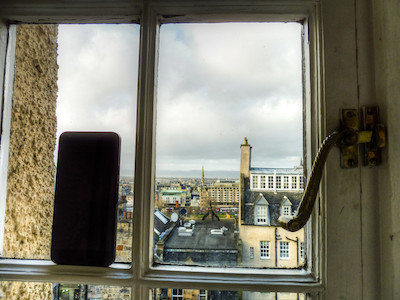
We fly, drive, and occasionally walk right over lines that define boundaries between nations but you may have wondered how thick those markings on the ground actually are. Surely a border has some sort of width, especially since so many of them were drawn before GPS or highly accurate geographic measurements were possible. It turns out in many cases, borders aren’t very different from the imaginary lines Bugs Bunny would drawn in the sand to infuriate Yosemite Sam.
Borders Aren’t Created Equal
Originally most borders in the world were actually neutral zones called marshlands which evolved into the country lines we’re more familiar with today. Country lines separate sovereign nations but since there isn’t a convention on when or how a border should be drawn (usually they’re defined after a conflict of some sort) there are a lot of highly unusual international borders.

Even Google Maps has created controversy before because they didn’t know quite where to draw a border – complicated by the fact that Costa Rica and Nicaragua can’t decide either.
Literally Lines On The Ground
At the daily Wagah border ceremony between India and Pakistan you’ll notice that guards from both sides enthusiastically march toward each other, only to turn facing away, several centimeters apart. Wagah’s elegant “I don’t like you” dance demonstrates that the line separating India and Pakistan is an infinitely thin marker denoted by a fence with white painted line on concrete.
Similarly, the much more friendly border between Belgium and the Netherlands is marked in some places by a few bricks or nothing at all which Mental Floss notes has caused some weirdness:
“The official border between Belgium and the Netherlands runs through living rooms, yards and cafes, so it’s possible – indeed, it happens more often than you’d think – to sit across a table having a cup of coffee with someone who is actually in a different country…For a while, a Dutch law requiring dining establishments to close earlier than they did in Belgium laid the foundation for an absurd, nightly charade in some Baarle restaurants. At closing time in the Netherlands, patrons would have to get up and move tables, over to the Belgian side.”
A lot like how embassies get their places in foreign countries, there isn’t a set way to draw up a border, they’re validity is only as good as the agreement between the sides involved.
 Broader Misconceptions
Broader Misconceptions
You might be under the impression that international borders are defined by physical boundaries, like parts of the U.S.-Mexico that happen to be along the Rio Grande River. Although the physical barrier of the river defined where the border would be, there’s actually an (imaginary) line in the waters equidistant between both the Mexican and United States shores. That’s the real international boundary although determining where shores lines are has caused numerous disputed along borders around the world, even between the U.S. states of Texas and Oklahoma until as recently as 2000.
Where Borders Bloat
Now that we know most borders are literally just lines drawn on the ground, another misconception is that they have to be lines at all. In fact, air and seaports are all considered borders themselves, which is why you’re not legally in another country until you cross the immigration line. (Remember the movie The Terminal?) When you’re in an airport on a layover, you’re technically “on the border” – one reason why your electronics are be subject to searches without probable cause in Western nations.
Next time you get a passport stamp (yay!) notice as you walk past the immigration booth, there’s probably a tape line on the floor or a small gate of some kind. Now you know what it represents.
Define The Line
There’s a good reason borders are marked with signs, lines, and people standing guard: they’re all made up. International borders are human constructs that need to be labeled to exist. For a few of you traveling wouldn’t be quite as fun without borders but let’s be happy many borders are as thin as they are – it’s always fun to hop between countries or hemispheres as you can do in Quito, Ecuador.


 The Terminal [Blu-ray]
The Terminal [Blu-ray]









We just walked across the border from Cambodia to Thailand and were surprised by how far it was between the place where we were stamped out of Cambodia and where we got stamped in to Thailand. It must have been 500 meters. They even had a couple of hotels and casinos in the area. It was a kind of neat no-mans-land. We considered checking into one of the hotels just to spend a night in no country at all.
I’m sure there’s an interesting story on how that space came to be 🙂
Anil, This is something we talk about a lot, because it is fun to think about. Good post!
It is a lot of fun, thanks!
Good post with an interesting topic that can be discussed for a while. Very interesting how boarders from certain countries and how they operate in comparison to others.
Happy to hear you found the topic engaging as well 🙂
I kind of like their little dance. No men dancing though, it’s like every night club in the world (exageration, I know…)
Of course they are all made up and aren’t definate but when you point out that patrons move tables to avoid one countries laws, you make it sound just as silly as it all is.
Heh, borders.
It definitely is interesting and colorful, but not at all surprising in this part of the world!
Wagah border crossing is a lot of fun to watch in person. the guards make it quite theatrical!
Absolutely 🙂 and a party on the Indian side.